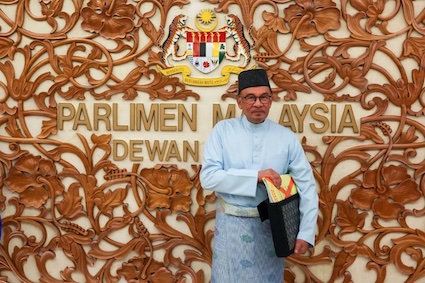Budget 23: Another Missed Opportunity

A mixed budget
Ramesh Chander, Murray Hunter and Lim Teck Ghee
Mainly status quo, part recovery, and part election oriented, various excuses can be made for the 2023 budget produced by the new government kicking the can of fiscal and institutional reform further down the road.
In his budget presentation, the Prime Minister, also the Finance Minister, had asked: “the question is whether there is political will to effect change” to what he diagnosed as the challenges facing the nation: high debt level, low quality of administration, global uncertainties, slow investment recovery and Rakyat economic woes.
However, with lack of time, Anwar’s administration had less than 90 days after coming to office to produce the new budget. In addition, he crafted the budget with the looming state elections in mind, where perhaps it is not surprising that the rhetoric of change and reform has largely remained rhetoric.
The first part of our commentary before the budget presentation (see “My Say: Case for a Reformist Budget 2023” https://www.theedgemarkets.com/node/654998) was to stress the need to tackle long overdue needed reforms such as restructuring the economy, reforming the tax regime, and reforming EPF. However it is clear that what has emerged is based on the original 2023 template presented by former finance minister Tengku Zafrul last October before GE15 – that is mainly cosmetic reform.
As a consequence, Anwar’s first full budget since 1997, is the largest budget presented in Malaysia’s history. But bigger is not necessarily better especially when it results in further bloat of the public service and little evidence of substantive institutional and governance reform measures.
Expenditure: Total forecast spending is RM 386.14 billion, of which RM 145.5 billion is spent on salaries and operating expenses, RM 58.6 billion in subsidies, while RM 97 billion is planned spending on development. The balance is on retirement charges (RM 30 billion), debt service charges (RM 45.94 billion), payments to states (RM 8.1 billion).
Receipts: This will be financed by RM 291.5 billion in revenue, made up of RM 218. 2 billion in tax revenue, and RM 73.3 billion in non-tax revenue.
This leaves a budget deficit made up from borrowings and payments from GLCs of RM 94.60 billion.
Disappointment with more of the status quo
There are no reforms undertaken on the EPF system, only some token assistance where balances under RM10,000 will receive an RM 500 top up. This is even though there is a retirement crisis in Malaysia. Likewise, rather than any tax reform, there will be a 2 percent decrease in tax rates for the B40 group, and an up to a 2 percent tax rise in the T20 group. Taxation revenue will become a crucial issue for future governments, if reform is not undertaken.
The budget fell well short of the income safety net promised by both Pakatan Harapan and Barisan Nasional before the election. The social assistance allocation of RM 8 billion to cover the needs of 8.7 million people will amount to RM 920 per person per annum. What has been dismissed as “paltry, one-off handouts” by a senior trade union official as opposed to a holistic approach to rectifying the fundamental issue of low wages continues to hold back the B40 and M40 income population.
Not exciting for SMEs
Assistance to SMEs will largely be in loans, with priority to developing automation, may run into delivery problems. Government criteria may be too tight, making many SMEs ineligible. The funds allocated for automation and digitalization, may not all be taken up, due to most SMEs being only ‘hand to mouth’ operations and not able to match grants. Tax incentives will be of little use to SMEs which have not been able to make profits and are technically insolvent. There is a risk that the Khazanah Nasional and EPF innovative and high-growth start-up companies RM 1.5 billion investment scheme will benefit only wealthy and connected companies as well as be largely expanded on consultancy services.
Food security
Bernas sharing 30 percent of net profits on rice imports, offering RM 1 billion in loans and tax incentives is not going to assist in enhancing food production. Technological grants for private investments may not be fully taken up by farming enterprises or may end up with sham politically connected companies. Little is being done to lower the cost of production, through decreasing input duties on farm inputs. There are still APs in place on many food items, which is contributing to artificially high costs.
The key forgotten reform
A special task force to reform government agencies is a small step in the right direction for enhancing the efficiency of government. This should be expanded to a full study of government, from ministries down to agencies, to determine where bloated staffing levels and inefficiencies exist and where necessary action can be taken to rightsize before the next budget.

